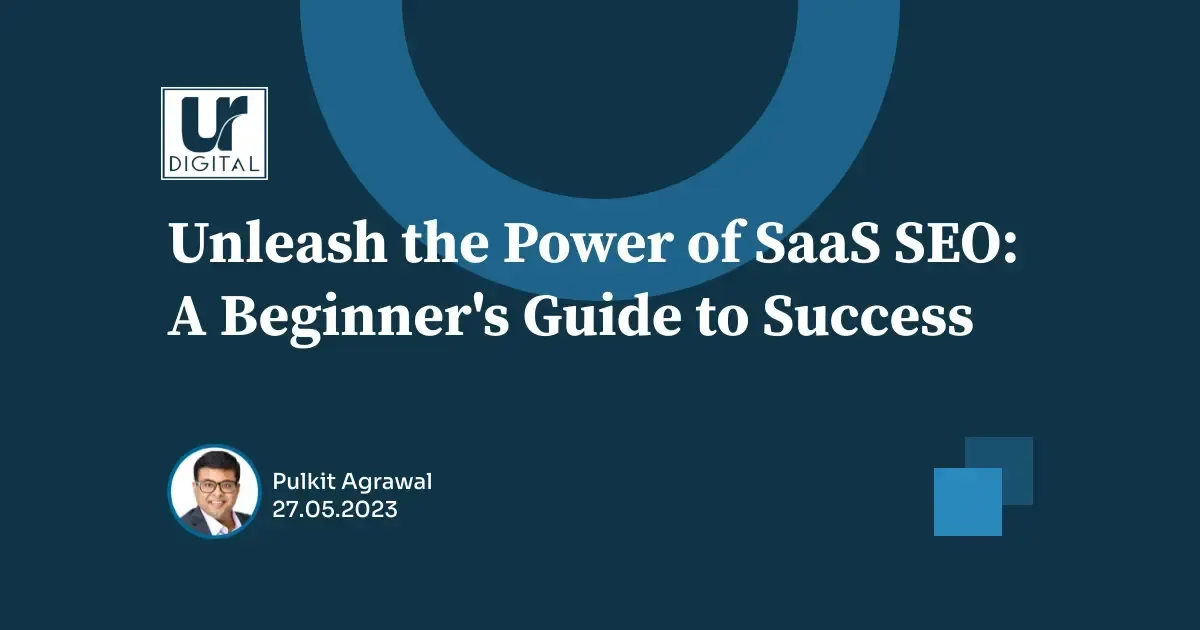7 Expert Techniques to Skyrocket Your SEO Using Google Trends
Consider Sharing
In the vast digital landscape, where the battle for online visibility and organic traffic reigns supreme, search engine optimisation (SEO) has become an indispensable weapon for businesses and content creators. To stay ahead of the competition and attract the right audience, mastering the art of SEO is essential.
Enter Google Trends, a formidable ally in your quest for SEO success. Google Trends is more than just a tool; it's a treasure trove of real-time search data that reveals the pulse of the online world. By harnessing its power, you can uncover valuable insights into search trends, keywords, and consumer behaviour, enabling you to craft a highly targeted and impactful SEO strategy.
In this article, we will explore seven compelling ways to leverage Google Trends to propel your SEO efforts to new heights. Get ready to supercharge your SEO strategies and unleash the full power of search insights to drive organic traffic and achieve your online goals.
Understanding Google Trends
Google Trends is a powerful and user-friendly platform that allows you to explore the popularity and interest of specific search terms over time. It provides data on how often a particular keyword or topic has been searched for, along with geographical and demographic information.
Google Trends aggregates data from billions of searches performed on the Google search engine. It then presents this data in the form of interactive charts, graphs, and related queries. By default, Google Trends displays relative search interest over time, allowing you to gauge the popularity of a search term.
Data-Driven SEO Tactics with Google Trends
1. Keyword Research
Keyword research forms the bedrock of any successful SEO strategy. By understanding your target audience's search terms and phrases, you can optimise your content to rank higher in search engine results pages (SERPs) and drive relevant organic traffic to your website. Google Trends emerges as an invaluable tool for keyword research that can provide unique insights and competitive advantage.
Let's explore how Google Trends can revolutionise your keyword research process:
- Identifying Trending Keywords: Google Trends allows you to identify keywords currently trending or experiencing a surge in search interest. You can view the search volume over time and uncover popular queries related to your industry by entering specific keywords or topics. This real-time data enables you to align your content with the latest trends and capitalise on the buzz around relevant topics.
- Seasonal Trends: Certain industries experience fluctuations in search volume based on seasonal or time-sensitive factors. Google Trends helps you identify these seasonal trends and adjust your SEO strategy accordingly. Analysing historical data lets you determine when specific keywords or topics experience peaks and valleys in search interest.
- Exploring Regional Interest: Different regions often exhibit varying search behaviours and preferences. Google Trends enables you to explore the geographic distribution of search interest for specific keywords. This feature is particularly useful for businesses targeting specific locations or regions.
- Long-Tail Keyword Insights: Long-tail keywords are specific, highly targeted search queries that often yield higher conversion rates. Google Trends can assist in identifying long-tail keyword opportunities by displaying related queries and rising search terms. By incorporating these long-tail keywords into your content, you can attract more qualified traffic and increase your chances of conversion.
2. Content Creation and Optimisation
Creating high-quality, relevant content is paramount to attracting organic traffic and engaging your target audience. However, keeping up with the ever-changing search trends and ensuring your content remains optimised can be daunting. This is where Google Trends steps in as a game-changing tool that can revolutionise your content creation and optimisation efforts. By leveraging Google Trends' powerful insights, you can create compelling and impactful content that resonates with users and ranks prominently in the SERPs.
Here are key ways to leverage Google Trends for content creation and optimisation:
- Discover Trending Topics: Google Trends enables you to identify the hottest topics within your industry or niche. You gain real-time insights into popular search queries by exploring the "Trending Now" section. This information serves as an invaluable source of inspiration for creating timely and engaging content that captures the attention of your target audience.
- Incorporate Trending Keywords: Google Trends helps you identify keywords currently trending or experiencing a surge in search interest. You can strategically incorporate these keywords into your content to enhance relevancy, thereby increasing the chances of ranking higher in SERPs.
- Stay Updated with Seasonal Trends: Google Trends reveals seasonal patterns in search interest, allowing you to optimise your content accordingly. By aligning your content with seasonal trends, you can leverage the increased search volume during specific periods and attract targeted traffic.
- Analyse Content Performance: Google Trends provides insights into the popularity of specific keywords or topics over time. By comparing the search interest for different content pieces or keywords, you can assess the performance and effectiveness of your existing content. This analysis helps you identify high-performing content, optimise underperforming pieces, and refine your content strategy accordingly.
3. Competitor Analysis
In the dynamic world of SEO, keeping an eye on your competitors is vital to stay ahead of the curve. Understanding their strategies, identifying gaps, and capitalising on untapped opportunities can give you a competitive edge. Google Trends is an indispensable tool for conducting competitor analysis and gaining valuable insights into their performance. You can refine your SEO strategies and outperform your rivals in the digital landscape.
Here are key ways to leverage Google Trends for competitor analysis:
- Analyse Competitors' Performance: Google Trends allows you to compare the search interest for your brand or keywords against your competitors. By entering multiple search terms, you can gain insights into how your competitors perform in search volume and relative popularity. This information helps you understand the competitive landscape and identify areas to improve your SEO efforts.
- Identify Trending Keywords: Google Trends helps you identify trending keywords and topics driving your competitors' search interest. By analysing the related queries and rising search terms associated with your competitors' brands or industries, you can uncover valuable insights into the keywords they are targeting and the content resonating with their audience. This information can guide your own keyword research and content creation strategies.
- Spot Market Gaps and Opportunities: Google Trends enables you to identify gaps and opportunities in the market by comparing the search interest for different keywords or topics within your industry. By understanding which keywords or topics are currently popular and which ones are underutilised, you can position yourself strategically to fill those gaps and attract a larger share of organic traffic. This allows you to differentiate your brand and capitalise on untapped opportunities.
- Refine Your SEO Strategies: Google Trends provides data-driven insights to help you refine your SEO strategies. Analysing the search interest trends and related queries allows you to better understand what users are searching for and adjust your keyword targeting, content creation, and optimisation techniques accordingly. This ensures that your SEO efforts align with current user preferences and stay ahead of your competitors.
4. Identifying Emerging Trends
Anticipating emerging trends and being one step ahead of your competitors can give your website a significant advantage. Google Trends is a powerful tool that empowers you to identify and leverage emerging trends before they become mainstream. By harnessing Google Trends' insights, you can position your SEO strategy to capitalise on upcoming trends and secure a competitive edge in your industry.
Here's how you can use Google Trends to identify emerging trends:
- Early Detection of Rising Search Interest: Google Trends allows you to spot rising search interest in specific keywords or topics. By monitoring the search volume for relevant industry-related terms, you can identify emerging trends before they gain widespread popularity. This provides a valuable opportunity to create content, optimise your website, and tailor your SEO strategy to meet growing demand.
- Tracking Long-Term Trend Patterns: Google Trends provides historical data and long-term trend patterns for various search terms. You can examine these patterns to identify recurring trends and anticipate future surges in search interest. This foresight enables you to plan your content creation and optimisation strategies in advance, positioning your website as an authoritative source for trending topics.
- Analysing Related Queries and Rising Topics: Google Trends provides insights into related queries and rising topics associated with your industry or niche. Exploring these queries allows you to uncover emerging trends gaining momentum. Analysing rising topics lets you stay informed about your target audience's evolving interests and needs. Creating content and optimising your website around these emerging trends can attract early adopters and establish yourself as a thought leader in your field.
- Monitoring Industry-Specific Categories: Google Trends offers the option to explore search trends within specific categories, such as technology, fashion, or health. Monitoring the trends within your industry category can help you identify emerging sub-niches or topics gaining traction. This information is vital to tailor your content and SEO strategies to target these emerging trends, attracting organic traffic and gaining a competitive advantage.
- Utilising Real-Time Data: Google Trends provides real-time data on search interest. By continuously monitoring the trends in your industry, you can adapt your SEO strategy in real-time to capitalise on emerging opportunities. Leveraging real-time data allows you to be agile and responsive, ensuring your website remains relevant and at the forefront of emerging trends.
- Leveraging Social Media Insights: Google Trends provides integration with social media platforms using 3rd party tools, allowing you to analyse trending topics and discussions across various social networks. By combining Google Trends data with social media insights, you can comprehensively understand emerging trends and their potential impact on search behaviour. This holistic approach empowers you to optimise your content, engage with your audience, and align your SEO efforts with the latest trends.
5. Local SEO Optimisation
In the era of hyperlocal marketing, reaching your target audience in specific regions is essential for businesses with physical locations or regional targets. Google Trends offers invaluable insights into local search trends, enabling you to optimise your local SEO efforts and attract customers from your desired geographical areas. By leveraging Google Trends for local SEO optimisation, you can enhance your online visibility, drive targeted traffic, and establish a strong presence in your local market.
Here's how you can use Google Trends for local SEO optimisation:
- Understand Local Search Trends: Google Trends allows you to explore search interests for specific keywords within a particular location. Analysis of regional interest for relevant keywords related to your business can help you understand local search trends. This knowledge empowers you to create targeted content and optimise your website to align with the interests and needs of your local audience.
- Target Location-Specific Keywords: Google Trends helps you identify location-specific keywords that are popular within your target market. Incorporating these keywords naturally into your website content, meta tags, and local business listings increases your chances of ranking higher in local search results. This optimisation strategy enables you to attract local customers who are actively searching for products or services in your area.
- Explore Geographical Interest: Google Trends provides insights into the geographical distribution of search interest for specific keywords. You can identify areas where the demand for your products or services is highest by examining these patterns. This information helps you tailor your marketing efforts and allocate resources effectively to optimise your local SEO strategy.
- Optimise Google Business Profile (formerly Google My Business): Google Trends offers valuable insights for optimising your Google My Business (GMB) listing. The GMB listing can be enhanced with relevant keywords, appealing descriptions, and high-quality images by analysing the search interest for your business category within your location. This optimisation increases your visibility in local search results and attracts more customers to your physical location.
- Capitalise on Local Events and Seasons: Google Trends reveals seasonal trends and local events that impact search behaviour. You can create targeted content, promotions, or offers that align with these local trends by identifying events or seasons with heightened search interest. This approach enables you to engage with your local audience, generate buzz, and attract more customers during peak periods.
6. Tracking Campaign Performance
Effective SEO campaigns require continuous monitoring and analysis to gauge performance and make data-driven improvements. Google Trends offers powerful insights that can help you track your SEO efforts' performance and measure your strategies' impact. By leveraging Google Trends to track campaign performance, you can gain valuable data, identify trends, and optimise your SEO tactics to achieve maximum success.
Here's how you can use Google Trends to track the performance of your SEO campaigns:
- ·Measure Search Interest: Google Trends allows you to measure the search interest for specific keywords or topics over time. You can assess whether user interest increases or decreases by tracking the search volume for your target keywords. This data helps you evaluate the impact of your SEO efforts and identify trends that can inform your future strategies.
- Compare Keyword Performance: Google Trends lets you simultaneously compare the search interest for multiple keywords. By comparing the performance of different keywords relevant to your campaign, you can determine which ones are driving more search volume and engagement. This information helps you prioritise your keyword optimisation efforts and focus on the terms that yield the best results.
- Analyse Seasonal Patterns: Google Trends provides insights into seasonal search patterns and trends. By analysing how search interest fluctuates throughout the year, you can identify peak periods and adjust your campaign strategies accordingly. This allows you to optimise your content and promotions during high-demand seasons, ensuring you capitalise on the increased search volume and maximise your SEO impact.
- Explore Regional Variations: Google Trends provides insights into regional variations in search interest. You can assess how your campaign performs in specific regions by analysing the search volume across different locations. This information helps you identify geographic areas where your SEO efforts are most effective and adjust your strategies to target those locations better.
- Identify Content Opportunities: Google Trends highlights rising search terms and popular topics gaining momentum. By monitoring these trends, you can identify content opportunities and create targeted, engaging content that resonates with your audience. This approach helps you attract organic traffic, drive user engagement, and enhance the overall performance of your SEO campaign.
7. Integrating Google Trends with Other SEO Tools
Google Trends is a powerful tool on its own, but when integrated with other SEO tools, it becomes even more potent. By combining the insights from Google Trends with data from other SEO tools, you can comprehensively understand search trends, keywords, and user behaviour. This integrated approach empowers you to make more informed decisions, refine your SEO strategies, and achieve greater success in your online endeavours.
Here's how you can integrate Google Trends with other SEO tools for enhanced performance:
- Keyword Research and Analysis: Google Trends can complement traditional keyword research tools by providing real-time search interest data. By combining the insights from Google Trends with keyword research tools like Google Keyword Planner or SEMrush, you can identify trending keywords, understand their popularity, and gauge their search volume. This integration enables you to make informed decisions about which keywords to target and optimise your content accordingly.
- Content Ideation and Creation: Integrating Google Trends with content research tools like BuzzSumo or Ahrefs can supercharge your content ideation process. By combining trending topics from Google Trends with the content analysis features of other tools, you can uncover the most engaging and shareable content in your industry. This integration helps you identify content gaps, craft compelling articles, and create content that resonates with your target audience.
- Performance Tracking and Analytics: Google Trends can be integrated with analytics tools like Google Analytics or Adobe Analytics to track the performance of your SEO efforts. You can understand how your SEO strategies impact user behaviour by analysing Google Trends data alongside website traffic, bounce rates, and conversion metrics. This integration allows you to fine-tune your SEO tactics, measure the success of your campaigns, and make data-driven optimisations for better performance.
- Social Media Monitoring and Engagement: Combining Google Trends with social media monitoring tools such as Hootsuite or Sprout Social can provide a holistic view of trends across different platforms. By aligning Google Trends insights with social media discussions and engagements, you can identify emerging topics, engage with your audience, and tailor your content for maximum impact. This integration helps you stay relevant, capitalise on social media trends, and drive traffic to your website.
- Competitor Analysis and Benchmarking: Integrating Google Trends with competitor analysis tools like SEMrush or SpyFu can provide comprehensive insights into your competitors' strategies. By combining Google Trends data with competitor keywords, rankings, and backlink analysis, you can uncover new opportunities, identify gaps in the market, and refine your SEO tactics for better performance. This integration allows you to benchmark your performance against your competitors, adapt your strategies, and gain a competitive edge.
- SEO Auditing and Technical Analysis: Integrating Google Trends with SEO auditing tools like Screaming Frog or DeepCrawl can help identify technical issues and optimise your website. Combining Google Trends data with website crawl analysis can uncover potential indexing or crawling issues that may affect your SEO performance. This integration enables you to address technical SEO concerns, improve website visibility, and enhance the user experience.
Conclusion
As the digital landscape continues to evolve, staying at the forefront of SEO trends is essential for online success. Google Trends emerges as a game-changing tool, providing valuable insights and unleashing your SEO potential. By harnessing the power of Google Trends, you can identify emerging keywords, create targeted content, track competitor performance, optimise for local searches, and measure campaign success.
So, don't just follow the trends—set them! Utilise Google Trends to gain a competitive edge, attract organic traffic, and outperform your rivals. Stay proactive, adapt to the ever-changing search landscape, and unlock new opportunities for SEO greatness.
At UR Digital, we always strive to keep up with the trends and refine our SEO strategies to provide our clients with the best possible
SEO services. If you are looking forward to improving your rankings in the Google SERPs, don’t hesitate to contact us. Book a
Free 30-minute SEO Consulting Session or Call Us at
02 9136 2498.
Author
PULKIT
AGRAWAL
FOUNDER & MANAGING DIRECTOR
Profile
My name is Pulkit Agrawal and I'm the Founder and Managing Director of
UR Digital. I invest my soul and imagination into every client. I have worked across many industries, over the past 15 years and countless highly successful SEO projects and campaigns.
Skills and Achievements
Multi-lingual SEO (English, German, Cantonese, Mandarin and Japanese). Google, Semrush, BEC Australia and LinkedIn certified. Member Entrepreneur Leadership Network. Guest Author Entrepreneur, Semrush & Inside Small Business.
Connect with me on
Consider Sharing











